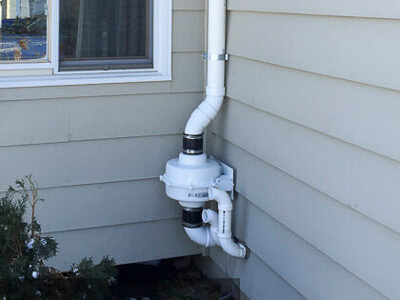The effective and safe control of radon gas is one of the most important aspects of building regulations. Keeping radon levels under control is a prime reason why standards are set in the first place. There are many ways to reduce radon levels in the home or building, but none are more effective and safer than radon mitigation. It is the process of removing radon gas through any possible gaps in the foundation structure radon to seep into the air and create a hazard.There are two main types of radon mitigation, including removal and containment. Radon removal is done by using gas absorbing materials that soak up and trap radon gas in between them. The gas is removed from the area by the use of a pump and then vented outside and away from the home.
Radon containment uses an airtight or sealed structure that helps prevent radon gas from escaping into the air. This is achieved by the use of a closed system that has no gaps in it and maintains proper ventilation of the structure. It is very important to have the structure properly sealed.The process of radon mitigation must be carefully considered by a certified professional. As well as removing radon gas, it is essential to use appropriate structural elements that increase the effectiveness of the process. Radon concentration in the home is naturally occurring but increasing, and trapped gas builds up to unsafe levels.
Radon mitigation of basement and other structures is not an option for those who live in older homes that have compromised foundations. As the radon gas permeates the foundation, the odds of soil penetration increase. There is also the risk of radon gas venting from the air systems, which leads to a build-up of gas in the living areas. The home will need a new foundation or basement before any further efforts. But for many other homes, including newer ones, radon mitigation is an affordable and necessary investment to maintain the environment and value of the home.
Radon gas can cause permanent lung damage to people who breathe it in. It is also responsible for certain types of cancer. It is worth looking into solutions ranging from simple sealing of the walls to extensive gas filtering systems, ventilation, and gas-absorbing material. The option for a repair or replacement of the entire home’s foundation is considered only when there is a very high probability of the radon gas penetrating the structure.
A professional assessment will start by looking at a simple solution before determining if more extensive remediation projects need to happen. If you choose to use a radon mitigation technique for your home, it is important to remember that radon gas does not easily dissipate into the air. It is like having a brick wall between you and fresh air. It is important to ensure that the space being treated has a fan and access to clean operational vents. Search online for a radon mitigation specialist to answer your questions.

